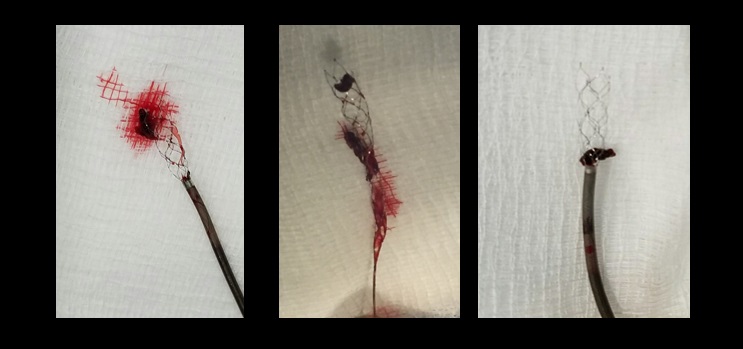Stent retriever thrombectomy may not be the best treatment approach, a small study suggests.

Calcified thromboemboli represent a rare but significant treatment challenge when they are implicated in acute ischemic stroke, according to a small retrospective study published online ahead of print last month in the Journal of NeuroInterventional Surgery. The findings also suggest that stent retriever thrombectomy may not be the best treatment option.
“The question of … whether thrombus histology influences the effectiveness of thrombectomy has already been answered in ex vivo models, and at least in part also in our in vivo study,” Tobias Boeckh-Behrens, MD (Technical University of Munich, Germany), who was not involved in the study, told Neurovascular Exchange. “All the data I know of seem to show that higher fibrin content is associated with higher resistance to thrombectomy. But these studies all deal with the main thrombus components, [namely] fibrin/thrombocytes [and] red and white blood cells.”
In contrast, this study focused on the rare situation in which the thrombus is heavily calcified. This has been found to occur in only 1.3% of cases, Boeckh-Behrens said. “The question of how these calcifications may affect the thrombectomy procedure has not been addressed before.”
Investigators led by Tomas Dobrocky, MD (University of Bern, Switzerland), reviewed retrospective data on all eight patients who presented with acute ischemic stroke related to calcified intracranial thromboemboli and were referred for endovascular therapy at two centers between January 2013 and July 2016.
Mean clot attenuation was 305 HU, ranging from 150 to 640 HU. Successful reperfusion—defined as TICI 2b-3—was as achieved in only one patient (12.5%). That patient was the only one deemed to have a good outcome after 3 months, Dobrocky told NVX in an email.
There were two periprocedural adverse events: a peripheral vessel perforation that was treated with coiling and an inadvertent stent retriever detachment due to fracture of the stent retriever wire.
Alternatives to Stent Retrievers Worth Investigating
“There are two main results of the present study which are surprising, at least in their clarity,” noted Boeckh-Behrens. “Although it seems quite obvious that calcification may hinder the procedure, the degree of this effect is surprising.”
Moreover, the occurrence of major complications in two out of eight patients is alarming, he said. “I assume these complications are in part due to an unfavorable device-thrombus interaction of the capture stent retriever in this special condition.”
Dobrocky expressed similar surprise that the outcomes of stent retriever thrombectomy were as poor as they were in this patient cohort. He noted, however, that it makes intuitive sense. “The principle of stent retriever thrombectomy is the compression and entrapment of thrombus material within the stent struts before withdrawal,” he explained. “It is questionable whether calcified thrombi, which pose higher resistance to deformation, may be effectively retrieved with this technique. Although not addressed in our study, alternative techniques like primary aspiration or intracranial stenting should be considered when faced with this thrombus type.”
A cohort of only eight patients is, of course, too small to allow for general treatment recommendations, even for such a rare condition. “Nevertheless,” said Boeckh-Behrens, “I as a neurointerventionalist will draw the conclusion to be very careful in these cases with the use of stent retrievers. The two similar cases I can remember were actually successful by aspiration alone. But of course, all these rare cases have special anatomical and patient-specific conditions, so the important thing we can learn by this study is to be prepared and aware of special challenges as well as possible risks in these cases.”
Boeckh-Behrens said he would like to see research looking at how different thrombectomy procedures compare in terms of success rates in patients with calcified clots. It would also be interesting, he said, to conduct histological testing on the clots.
Source:
Dobrocky T, Piechowiak E, Cianfoni A, et al. Thrombectomy of calcified emboli in stroke. Does histology of thrombi influence the effectiveness of thrombectomy? J NeuroIntervent Surg. 2017;Epub ahead of print.
Disclosures:
Dobrocky and Boeckh-Behrens report no relevant conflicts of interest.

